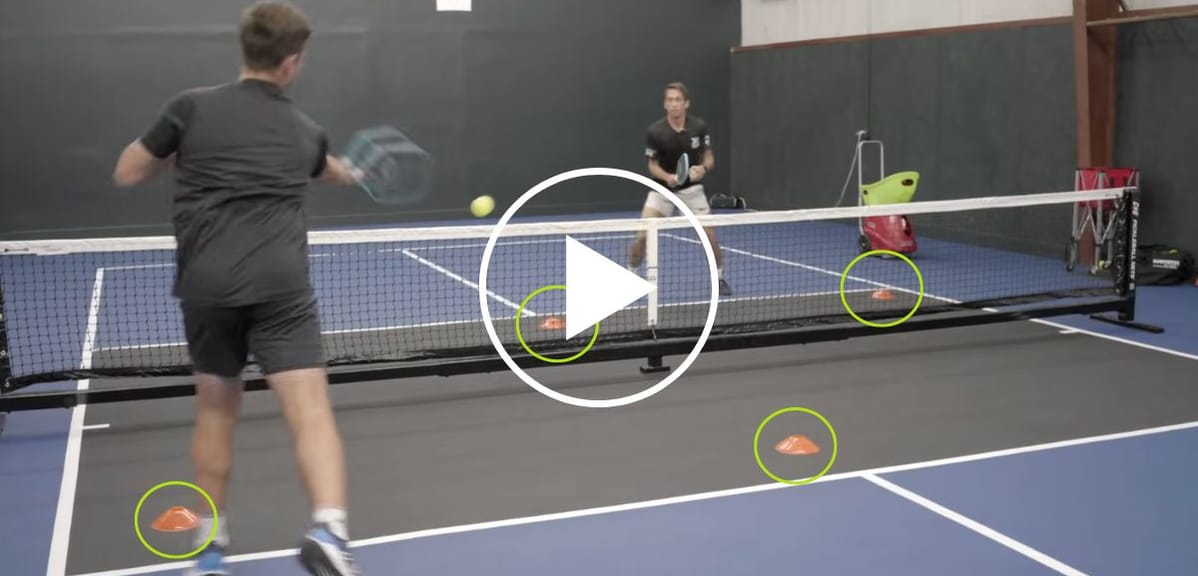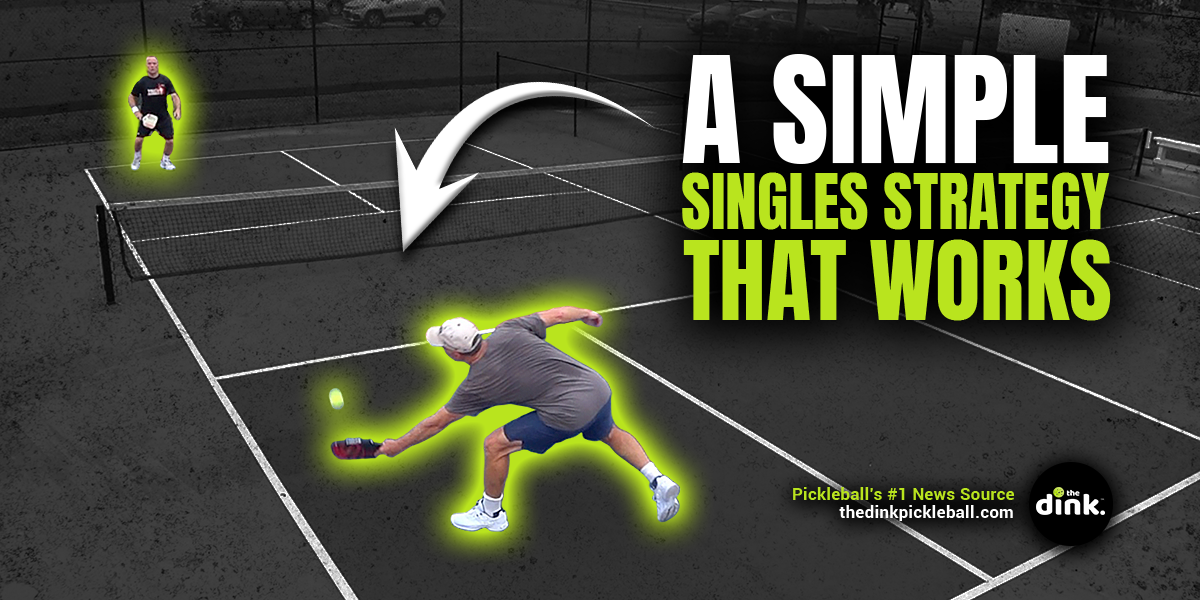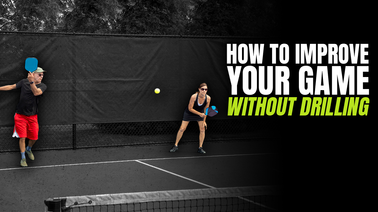
There’s nothing quite like settling into a crosscourt dink battle.
It’s mano-a-mano with your opponent to see who will make a mistake first. And while hitting the perfect crosscourt dink is the goal, perfection is not always the answer.
If you can make your opponent move from the midline to the sideline, your mediocre dinks become more effective.
PicklePod co-host Zane Navratil explains his new drill to help on targeting the middle and sideline dink.
Two-Cone Drill
The drill involves placing two cones about a foot inside the kitchen line. One near the sideline and the other near the midline.
During the drill, you will dink crosscourt back and forth with your partner. If you hit the cone, you win the point. Anything beyond the kitchen line is out.
Either cone counts as a point, so there’s incentive to switch your target and make it more difficult for your opponent to find a rhythm. The cone on the court gives you objective feedback to see if the ball is really landing exactly where you want it to.

The Next Step
Once you are hitting cones consistently, it’s time to add a twist: the Two-Cone Drill with Attacking. The threat of an attack makes it so you can’t hit a lofty ball, only focusing on trying to hit the cone.
If that dink is left too high, you’ll lose via an attack. This drill is a closer simulation to real match play and can help make you a machine at the kitchen line.


Love Pickleball? Join 100k+ readers for free weekly tips, news & gear deals.
Subscribe to The DinkGet 15% off pickleball gear at Midwest Raquet Sports











